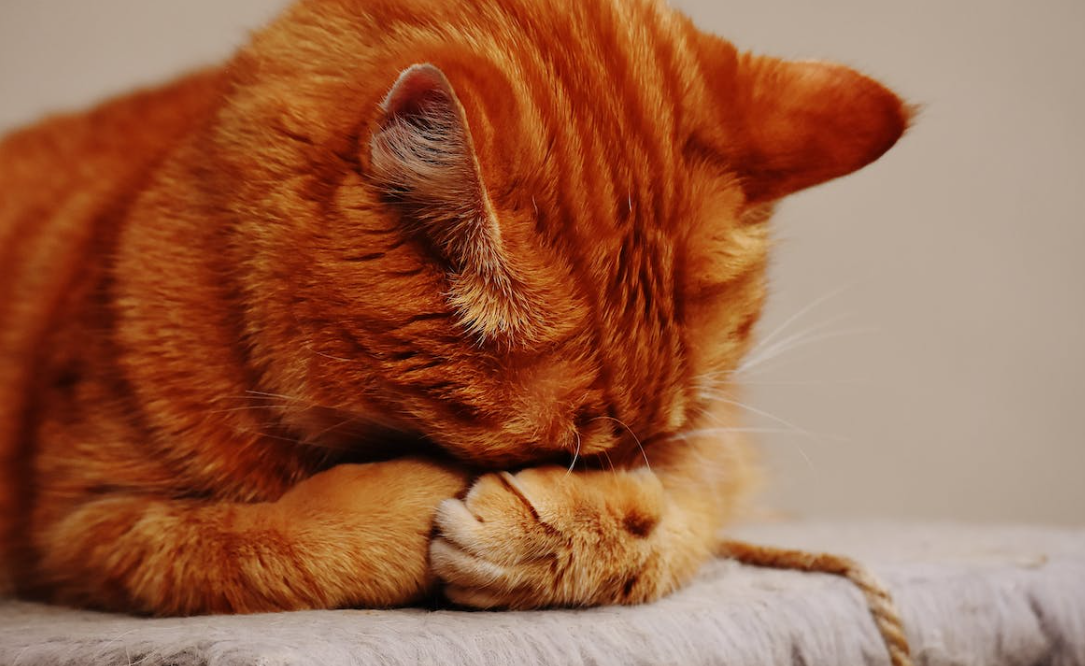No matter how furry and adorable our feline friends may be, there is one aspect of their grooming routine that can leave even the most devoted cat lover feeling slightly uneasy: hairballs. These squishy, cylindrical masses of fur seem to magically appear, causing a strange mix of fascination and disgust. While it’s common for cats to experience hairballs, it’s important to recognize that they can sometimes lead to more serious health issues. In this article, we will delve into the mesmerizing world of hairballs, exploring the reasons behind their formation and discovering effective ways to prevent and treat them. By understanding the true nature of this peculiar phenomenon, we can ensure our beloved furballs enjoy a healthy and hairball-free life. So grab your comb and prepare to embark on a journey to unravel the mysteries of preventing and treating hairballs in cats!

Understanding the Causes and Symptoms of Hairballs in Cats: Promoting a Healthy Coat
Having a cat with a luxurious coat is a pride for every pet owner, but with beauty comes responsibility! Hairballs are a common issue that affects our feline friends and understanding their causes and symptoms is crucial in maintaining a happy and healthy cat. Here, we delve into the fascinating world of hairballs, unraveling the mysteries behind them.
The Causes of Hairballs in Cats:
- Cats are meticulous groomers, and during their self-care sessions, they inadvertently swallow loose hairs that eventually form hairballs in their digestive system.
- Long-haired breeds, such as Persians and Maine Coons, are more prone to hairballs due to their thicker and abundant fur.
- Poor diet lacking essential nutrients can lead to shedding and excess hair buildup, contributing to the formation of hairballs.
The Symptoms of Hairballs in Cats:
- Frequent hacking and coughing episodes are telltale signs that your cat is struggling with hairballs.
- Occasional vomiting, often accompanied by hair, is another indication that your cat is trying to expel hairballs.
- A decrease in appetite, lethargy, and constipation may occur in severe cases of hairball obstruction in the digestive tract.
Keeping your feline companion’s coat healthy is pivotal in managing hairball concerns. Regular brushing helps remove loose hair, reducing the amount your cat swallows while grooming. Additionally, providing a balanced diet rich in fiber and moisture ensures proper digestion and minimizes excessive shedding. By understanding the causes and being vigilant of the symptoms associated with hairballs, you can take proactive steps to promote a happy, hairball-free life for your beloved cat.
Minimizing Hairball Formation through Regular Grooming Techniques and Dietary Adjustments
When it comes to our beloved furry friends, there is one thing that most of us could do without—hairballs. These unsightly messes can not only cause discomfort to our pets but also leave our homes in disarray. It’s time to say goodbye to the nuisance of hairballs by following these simple, yet effective, grooming techniques and making dietary adjustments for your furry companions.
Grooming Techniques:
- Regular brushing: Make it a habit to brush your pet’s fur regularly, especially if they are prone to shedding. This helps to remove loose hair and prevent matting, resulting in less hair being ingested during self-grooming.
- Bathing: Treat your pet to a relaxing bath using a pet-friendly shampoo. Thoroughly rinsing their coat helps remove excess hair and reduces the likelihood of hairballs.
- Pet-friendly wipes: Swipe away loose hairs using specially designed pet wipes. These are handy for a quick touch-up between grooming sessions.
Dietary Adjustments:
- Incorporate fiber-rich foods: Consult with a veterinarian to choose the right high-fiber food for your pet. Introducing such foods can aid digestion and help hair pass through their system more easily, reducing hairball formation.
- Hydration is key: Ensure your pet has access to fresh water at all times. Keeping them hydrated promotes digestion and helps hair pass through the digestive tract efficiently.
- Specially formulated treats: Look for treats that promote hairball control. These treats usually contain ingredients that help prevent the formation of hairballs within the digestive system.
By incorporating these techniques into your pet care routine, you can minimize the bothersome issue of hairball formation. Always remember to consult with a veterinarian for personalized guidance tailored to your pet’s specific needs. Provide your furry friends with the care they deserve, and say goodbye to hairball woes!
Effective Treatment Options for Hairballs in Cats: Promoting Digestive Health
When it comes to hairballs in cats, prevention is key. However, there are several effective treatment options that can help alleviate discomfort and promote digestive health in our furry feline friends. Here are some proven methods:
- Dietary Supplements: Incorporate a high-fiber diet rich in essential nutrients to support optimal digestion. Look for specialized cat foods enriched with fiber, such as pumpkin or psyllium husk, to aid in the passage of hairballs through the digestive tract.
- Frequent Grooming: Regular brushing helps to remove loose hair and prevent excessive shedding, reducing the amount of hair your cat ingests while grooming. Consider investing in a gentle cat-specific brush to make grooming sessions a bonding experience for both of you.
- Hydration: Encourage your cat to drink plenty of water to help maintain hydration and promote smooth digestion. Consider providing a fresh water source in various locations around your home to entice them to drink more frequently.
It’s important to note that if your cat is experiencing chronic hairball issues or severe discomfort, it is advisable to consult with a veterinarian who can provide tailored advice and further treatment options. By implementing these effective treatment options and making them an integral part of your cat’s routine, you can ensure their digestive health is supported and hairballs become a thing of the past!
Preventive Measures for Hairballs in Cats: Creating a Hairball-Friendly Environment
Cats are notorious for their grooming habits, spending hours every day cleaning their fur. While this self-care is essential, it often leads to annoying hairballs. However, by creating a hairball-friendly environment, you can help prevent these uncomfortable regurgitations. Here are a few tips to promote a healthy coat and minimize hairball incidents:
- Brush your cat regularly: Regular brushing is key to removing loose fur before it can be ingested, greatly reducing the chances of hairball formation. Choose a brush that suits your cat’s coat type, and make it a enjoyable bonding experience by rewarding them with treats or gentle petting.
- Provide a balanced diet: Proper nutrition plays a significant role in managing hairballs. Opt for high-quality cat food that is specifically formulated to control shedding. These diets often include natural fibers that aid in hair passage through the digestive system. Consult with your veterinarian to determine the best option for your feline friend.
- Encourage hydration: Adequate water intake helps lubricate the digestive system, making it easier for hairballs to pass through. Ensure your cat has access to fresh water at all times, and consider offering wet food or incorporating a pet water fountain to entice them to drink more.
Curating a hairball-friendly environment not only benefits your cat’s well-being but also results in a cleaner and more peaceful living space for both of you. Implement these preventive measures, and you’ll find yourself spending less time cleaning up hairballs and more time cuddling with your fur baby!
The Conclusion
In conclusion, keeping your feline friend healthy and hairball-free doesn’t have to be a daunting task. By incorporating a few simple preventive measures and incorporating the right treatments, you can ensure a happier and healthier life for your beloved cat.
Remember, regular grooming sessions and brushing should be a bonding experience between you and your fur baby. Not only will it promote a shiny and lustrous coat, it will also minimize the risk of hairballs. Choosing the right diet that includes a high-fiber content and hairball preventive supplements can further enhance their overall well-being.
It’s important to address any underlying issues that may lead to excessive shedding, such as stress or skin conditions. Consulting with your veterinarian will help identify the root cause and determine the appropriate course of action. Whether it’s introducing environmental enrichment or prescribing medication, their expertise will ensure the best possible outcome for your feline companion.
Finally, creating a cat-friendly environment that promotes mental stimulation and physical activity can work wonders in preventing hairballs. From interactive toys to designated scratching posts, engaging your cat in healthy playtime will not only keep them entertained but also minimize excessive grooming behaviors.
By taking proactive steps and implementing effective preventive measures, you can keep your cat’s digestive system running smoothly and reduce the incidence of hairballs. Remember, a happy and hairball-free cat is a healthier cat overall. So, let’s commit to keeping our feline friends purring with contentment and maintaining their vibrant health.
Hairballs are a common problem for cats and can be uncomfortable and worrying for pet owners. However, with a bit of effort and a few simple preventative measures, hairballs can be dramatically reduced and ultimately prevented.
When a cat grooms itself, it swallows natural oils and loose hair which then accumulate in the cat’s digestive tract and often result in hairballs. If they are not expelled, they can cause obstruction in cats’ stomachs leading to poor digestion or even, in some cases, surgery.
The most important way to avoid or reduce hairballs is to groom your cat regularly and, in particular, to brush its fur with a occasional comb or brush to help remove excess hair. Brushing your cat should be done slowly and gently, making sure not to scratch your cat’s skin.
You can also help prevent hairballs by regularly wiping the fur with a damp cloth as this can also help to pick up some of the oils and loose hair.
In addition, there are also a number of treatments and supplements that can help reduce the occurrence of hairballs. Specifically, special cat treats and foods may contain a combination of dietary fibres and other elements which help to aid digestion and reduce the amount of hair that is ingested. In some cases, it may also be a good idea to give your cat a hairball solution which is an effective and user-friendly way to combat the problem.
In summary, preventing and treating hairballs in cats is important if you want to keep your feline healthy and comfortable. Brushing regularly and following a few simple steps can go a long way in helping to reduce the occurrence of hairballs. In addition, it is also a good idea to use supplements or special treats to aid digestion and help avoid future hairballs.





